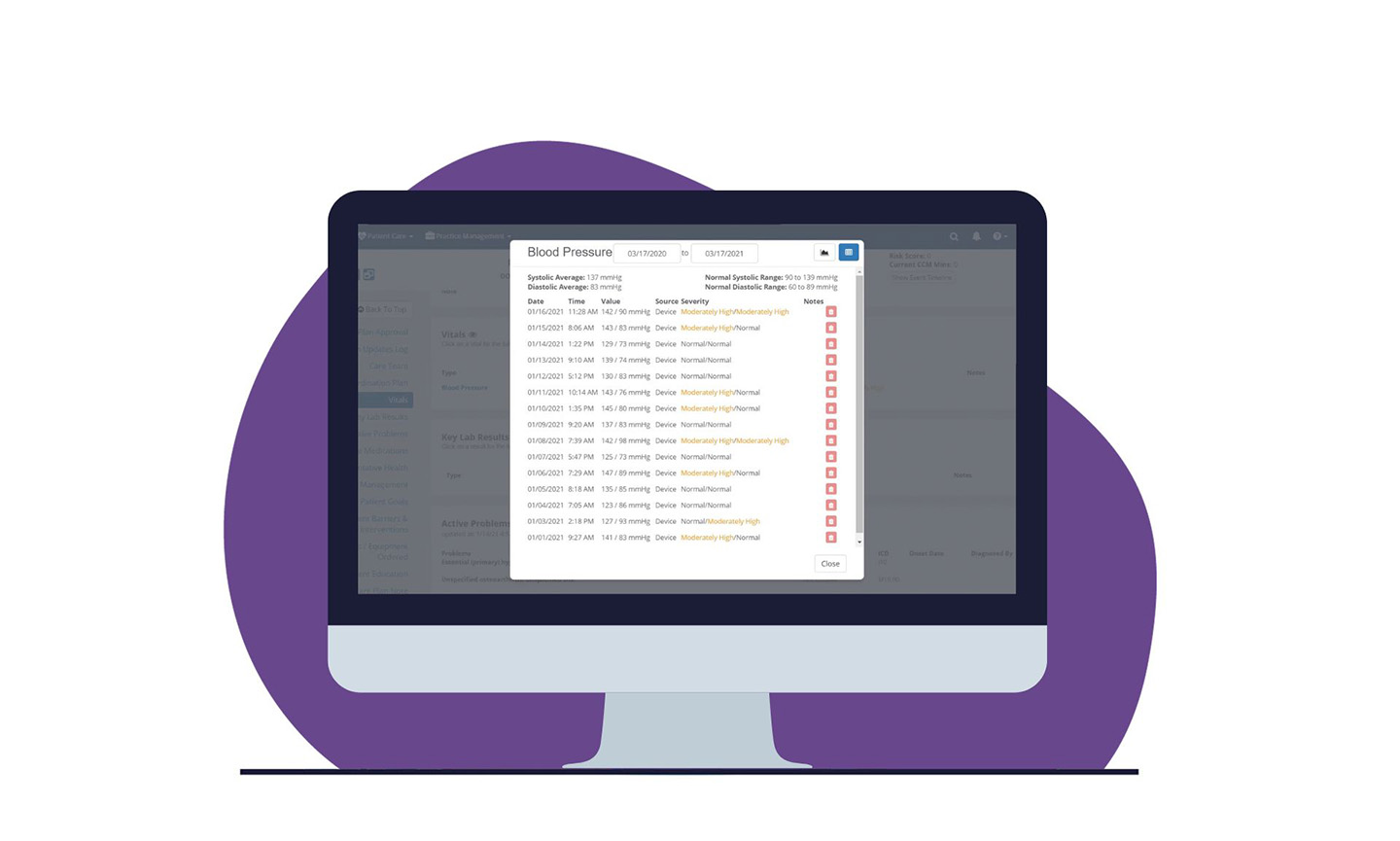Virtual care has evolved from a temporary fix to a long-term strategy—and Remote Patient Monitoring (RPM) is at the center of it.
Across the healthcare industry, providers are using RPM to gather real-time biometric data, proactively manage chronic conditions, and reduce avoidable hospitalizations. For Federally Qualified Health Centers (FQHCs), Rural Health Clinics (RHCs), and medical groups alike, RPM is more than a tool—it’s a transformational strategy that shows how to improve chronic care management while enhancing both clinical outcomes and operational efficiency.
Why RPM Matters in 2025
Remote Patient Monitoring combines connected health devices with care management software to capture and transmit vital health data—enabling providers to intervene earlier, personalize care, and improve patient engagement.
Whether you’re managing high-risk patients with heart failure or helping a broader population maintain healthy blood pressure, RPM can:
- Reduce emergency department visits and hospital readmissions
- Improve medication adherence and care plan compliance
- Empower patients to take a more active role in their health
- Extend the reach of your care team without overextending staff
The Right Data at the Right Time
Successful RPM isn’t just about having devices—it’s about having the right data, delivered to the right people, at the right time.
With TimeDoc Health, clinicians receive real-time insights into key vitals like blood pressure, blood glucose, weight, and oxygen saturation. Customizable alerts notify your team of any concerning trends, enabling timely intervention before issues escalate.
For patients with chronic conditions, this real-time monitoring bridges the gap between visits—showing how to improve chronic care management by making care continuous, not episodic.
Improving Outcomes While Reducing Utilization
The evidence is clear: RPM works.
- Patients with heart failure who were monitored remotely saw significantly fewer hospitalizations and ER visits.
- Patients with diabetes who used RPM had better blood sugar control and lower HbA1c levels.
- A recent survey of 25 health systems using RPM found:
- 38% reduction in hospital admissions
- 25% fewer ER visits and readmissions
- 17% reported direct cost savings
RPM not only improves care—it demonstrates how to improve chronic care management by reducing costs and enhancing access, especially for patients facing barriers like transportation, work schedules, or caregiver responsibilities.
Designed for Clinical and Operational Efficiency
Effective RPM supports your care teams—not burdens them. That’s why TimeDoc Health offers a streamlined, EHR-integrated solution that adapts to your workflows.
Key features include:
Multi-Condition Monitoring
Blood glucose meters, blood pressure cuffs, scales, and pulse oximeters—pre-configured and cellular-enabled for out-of-the-box use.
Automatic Data Flow
Readings are transmitted automatically to the patient dashboard—no smartphones, Bluetooth, or Wi-Fi required.
Customizable Alerts
Set threshold alerts globally or per patient, so your clinical team is notified only when it matters.
EHR Integration
We push patient data directly into your EHR—supporting continuity of care without duplicative work.
Full-Service Support Options
Don’t have the staff to run an RPM program? We do. TimeDoc Health offers flexible staffing models, from supplemental support to full program outsourcing.
A More Convenient Experience for Patients and Providers
RPM enhances flexibility for everyone involved. Patients gain peace of mind with around-the-clock monitoring—without the burden of frequent in-person visits. Providers gain access to timely insights, allowing them to prioritize care and reduce burnout.
Plus, with Medicare’s continued support for RPM reimbursement through codes like G0511, your program can drive both clinical impact and revenue.
Partner with TimeDoc Health to Maximize RPM Success
Our virtual care platform was built to help you deliver better care—without increasing administrative complexity. Whether you’re launching a new RPM initiative or optimizing an existing one, we’re here to help you build a high-performing, compliant program that’s ready for the future.
Ready to see it in action?
Request a personalized demo and discover how TimeDoc Health can transform the way you care for your patients—one reading at a time.

